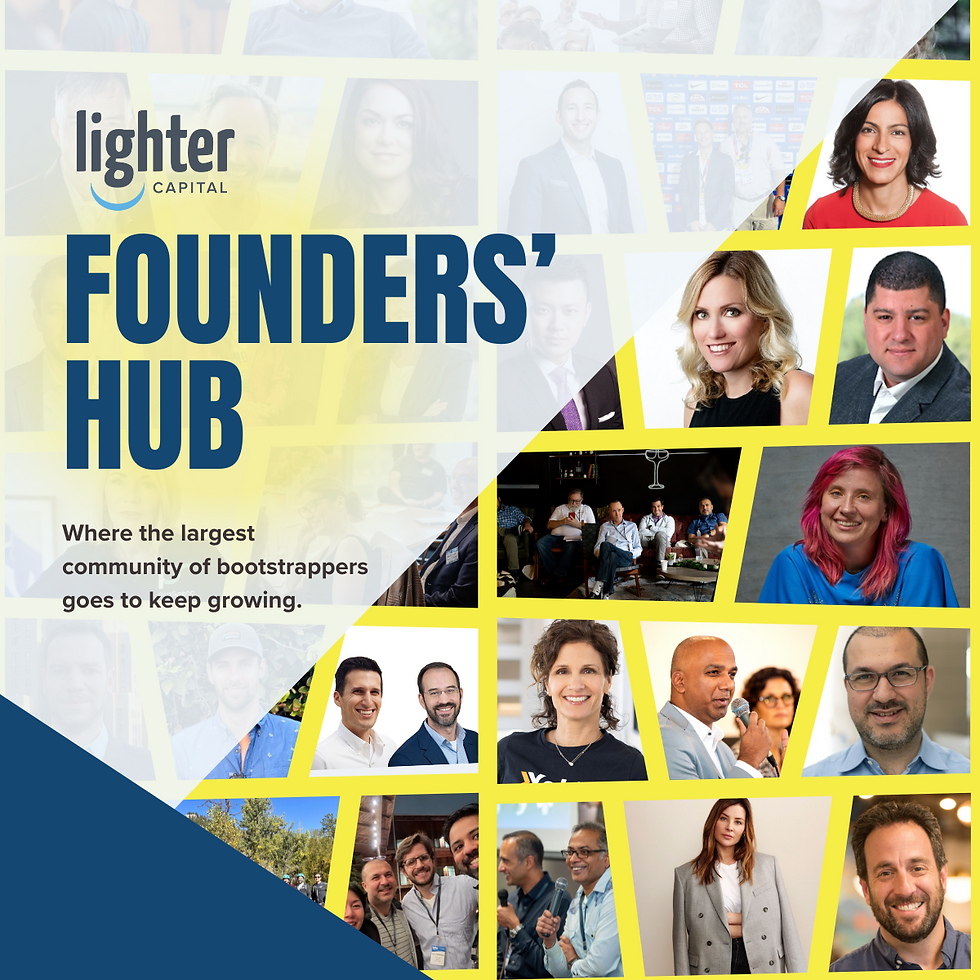Funding Fit Tip 2: An Idea is Not a Product
- Lighter Capital

- Dec 22, 2014
- 3 min read
Updated: Dec 5, 2023
This is the second post of our 10 week “Funding Fit” blog series. Read the first tip here!
If you consider this summer’s success story of Yo — the messaging app that does nothing but send your friends a text that says “Yo” — it may seem like investors are once again throwing money at any old startup like they did during the 90s tech bubble.
Sure, the fact that Yo raised $1.5M seed funding with a $10M valuation might have been a surprise, but their simple product had 2 million app installs and for four days in June ranked the fourth most popular app in the U.S.
What got Yo the $1.5M check was not the idea of sending a “Yo” message to anyone you know, but the fact that 2 million users had interest in this product.
For today’s entrepreneurs, the days of a brilliant idea — or, sometimes, a not-so-brilliant one — being enough to garner interest from investors are long gone. Today, even seed investors want to see some kind of proof of concept. That’s because it’s gotten much cheaper to develop a product — a team of three dedicated co-founders can now build an initial product and build it well. Plus, a lot of entrepreneurs can afford to forgo a paycheck for a year or two, during which time they can tinker away, turning their ideas into a usable product that they can test in the marketplace.
If you are approaching investors with nothing more than an idea, a theory, a “what-if” story, and you’re competing against entrepreneurs with a functional product (often with an existing user base and revenues); you’re going to be just as successful as poking your potential investors with a Yo! message.

Unless you’re a serial entrepreneur who has received VC money before, your funding options for a company at the idea stage are virtually non-existent. So, if you want to get outside capital in the new year, your funding fitness routine will need to include some heavy lifting in product development.
1. Build a minimum viable product
Sure, you may not have all the bugs worked out. Your product may not yet have all the bells and whistles you envision. Heck, it may not even work on every platform it needs to work on. But you should have something functional that you can demo to potential investors — and that minimum viable product (MVP) should work well enough to showcase key features. When you a starting a company, really think about whom on your co-founding team can execute your idea and build a product. Without a minimum viable product, all you have is an idea.
2. Highlight your unique value proposition
When you are considering where to focus your product-building efforts, consider which elements will be essential to show your product’s unique value proposition to potential investors. What makes your product unique — or even a game-changer in your industry? At the very least, how does your product differ from other competitors and how will it bring additional value to the end user?
Be sure your MVP can sufficiently answer those questions before you start courting investors.
3. Showcase technical innovation
Sometimes your company will be solving a totally unique problem that no other product has ever come close to tackling before. But often your product solves a problem that others have attempted to solve before — just not as effectively as your product can.
While many investors are open to funding a new-and-improved solution, they’ll want to see evidence that your product is more than a fancied-up derivative with a few new features.
If you want to have the best shot at convincing an investor that your company is worth the risk, create an MVP that includes one or more truly innovative technical facets.






